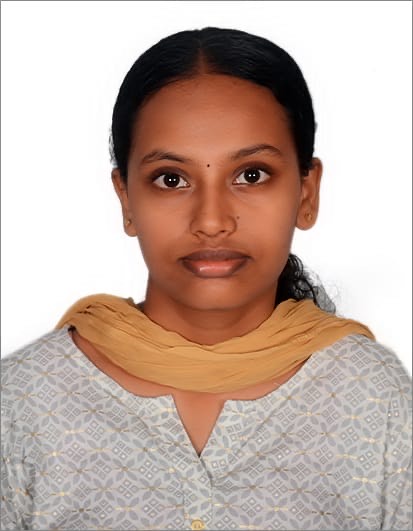Abstract
Introduction The evolving landscape of pharmacy education demands innovative teaching methodologies to equip future pharmacists with essential skills. The perspectives of first-year students are vital for curriculum development, as they can identify gaps in current educational practices. This study aims to understand these perceptions and inform the necessary pedagogical shifts in pharmacy education. Materials and Methods An observational cross-sectional study was conducted at a pharmacy institution in Chennai, Tamil Nadu, using a validated semi-structured survey. First-year B.Pharm and Pharm.D students participated, while Diploma course students were excluded. Data were analyzed using SPSS software after tabulating in Microsoft Excel. Ethical approval was obtained from the department heads. Results Out of 130 responses received, 105 were analyzed, revealing several key findings. Notably, 95.2% of students expressed satisfaction with their course selection, and 73.3% were aware of the career scope available to them post-graduation. Interestingly, 69.5% perceived the pharmacy profession as a business, and 83.8% found it easy to relate their current studies to their high school learning. The preferred teaching methods revealed a strong inclination towards interactive formats, with 31.8?voring slide presentations as a learning tool. Conclusion Pharmacy education must evolve to meet the practical and intellectual demands of the healthcare landscape. By incorporating student feedback into curriculum design, educational institutions can better prepare graduates for their roles in diverse healthcare settings, ensuring they possess both theoretical knowledge and practical skills.
Keywords
Pharmacy Education, Curriculum Development, Student Satisfaction, Practical Training, Innovative Teaching Methods
Introduction
The ever-evolving landscape of pharmacy education necessitates innovative and effective teaching methodologies to prepare future pharmacists with essential skills and knowledge. As the field advances, it is crucial to reassess traditional pedagogical approaches and incorporate the perspectives of incoming students. The freshers' cohort, characterized by their unique blend of experiences, expectations, and technological proficiency, presents a valuable opportunity to inform curriculum development and instructional design. Freshers bring fresh perspectives and experiences that can significantly influence curriculum development. By assessing their insights, educators can identify gaps in existing teaching methods and pinpoint areas that require improvement. For example, understanding students' technological preferences can guide the integration of digital tools into the learning experience, making it more engaging and relevant. Additionally, feedback from freshers can highlight the importance of practical training, emphasizing the need for hands-on experiences that align with theoretical knowledge. Pharmacy education faces several lagging factors that impede its effectiveness and relevance in today's healthcare landscape. One significant issue is the slow integration of emerging technologies, which can enhance learning experiences and improve clinical practice. Many curricula still rely heavily on traditional teaching methods, failing to engage students in active learning and critical thinking. Additionally, there is often a lack of inter-professional education, limiting students' ability to collaborate effectively with other healthcare professionals. Insufficient emphasis on practical training and experiential learning further exacerbates the gap between theory and practice. Moreover, the curriculum may not adequately address contemporary issues such as personalized medicine, public health, and health informatics, resulting in a workforce that is not fully prepared to meet evolving patient needs. Addressing these factors is essential for developing a more robust and relevant pharmacy education framework.
Fostering a student-centered approach in pharmacy education fosters an inclusive environment that values diverse viewpoints and styles. This encourages collaboration among students, enhancing their ability to work effectively in inter-professional teams. By incorporating fresher perspectives, educators can tailor instructional strategies, improving student engagement and overall learning outcomes. This shift not only enhances the learning experience but also prepares future pharmacists for the healthcare system.1-6 Thus this study focuses on the freshers’ insights on the same and the ways to improve teaching practices in pharmacy education.
MATERIALS AND METHODS
Study setting and design
An observational cross-sectional study was conducted at a single pharmacy curriculum institution in Chennai, Tamil Nadu using a semi-structured survey form, which was validated by experts in the department of pharmacy practice. A pilot study involving ten participants, who were not included in the final sample and were from outside the study sites, was conducted prior to the main study.
Study population, inclusion, and exclusion criteria
The study included first-year Pharmacy undergraduates (B.Pharm and Pharm.D) of both genders, while students enrolled in Diploma courses and incomplete responses were excluded.
Data collection
Data on pharmacy fresher students’ perception of their course and career paths in future were collected using a semi-structured survey form.
Data analysis
The collected data was tabulated using Microsoft Excel and analysis was performed using SPSS software.
Ethical Considerations
A detailed protocol is presented to the heads of the department in the institution and it was got approved for further study procedure. Throughout the study period, no ethical conflicts were observed. As a result, it was determined that formal ethical clearance was not deemed necessary.
Consent to Participate
An oral consent was obtained in accordance with ethical guidelines. All participants were informed of their rights and the nature of the study prior to providing their consent.
RESULTS
Out of 130 responses received, 105 (80.76% of responses) were analyzed after excluding the incomplete responses. Table 1 describes certain parameters covered in the survey where 72.4% of the responses were from B. Pharm undergraduates while the rest 27.6% were from Pharm.D graduates. Almost all of our responses (95.2%) were satisfied with their selection of course and 77.3% of our respondents were already aware of the scope after completion. 69.5% of our respondents were under the perception of Pharmacy profession as a business platform while 30.5% considered it as a platform of service. 83.8% of our respondents felt it easy to correlate their high school learning with their current first year syllabus while 16.2% couldn’t.

Table 1 Parameters covered during the study
43.8% of our respondents were interested in higher studies at their current field while 3.8% preferred higher studies in other field rather than their own field. 31% of our respondents chose research and development as their career path while 18% were interested in starting a pharmacy and be an entrepreneur. 31.8% of the respondents preferred getting taught through slide presentations while 24.8% preferred Notes and Oral lectures, the least number of respondents (18.6%) preferred board writing as their preferred teaching method.
Pharm.D freshers opened up the need for more practical learning (86.2%). Future plans after pharmacy education (p=0.018) and awareness of the scope after completion (p=0.035) had a strong correlation with the course they are pursuing. Perspective on pharmacy profession varied between male and female respondents (p=0.014). Table 2 indicates parameters showing statistical significance.

Table 2 indicates parameters showing statistical significance
Focal Group Discussion:
In order to assess pharmacy students' perceptions, awareness, and experiences related to research and innovation in pharmacy education, to identify barriers and facilitators to research engagement, to learn about innovation among pharmacy students and to gather suggestions for enhancing research and innovation strategies in pharmacy education, Focal group discussion (FGD) was conducted among the pharmacy freshers of both B.Pharm and Pharm.D. In each course the participants are categorized into five groups and each group contains 3-6 members in Pharm D (class strength: 30) & 18-20 members in B Pharm (class strength: 98). The research experienced moderator conducted the elaborate discussion on Perceptions of Research in Pharmacy Education, Barriers to Research Engagement and Curriculum and Research. On interview, it resulted that 87% of our respondents are aware on the research opportunities available and 95.2% felt time constraint as the major barrier in a successful research project while the rest felt lack of guidance to be the factor obstructing research.

Table 3 Factors assessed during Focal group Interview
DISCUSSION:
This study investigates how pharmacy students view pharmacy education, with a particular emphasis on anxiety levels and the effects of gender differences. It emphasizes how crucial it is to provide courses on undergraduate research methodology in order to enhance students' attitudes toward research and lower their levels of anxiety. A study in Dehradun, reported that the students were unsatisfied of their decision of choosing pharmacy course but contradictorily in our study, 95.2% of our students were very well satisfied of their decision of choosing pharmacy course.7
Previous research has suggested that prior to starting their pharmacy education, most students have limited awareness of the role of pharmacists in society.8 and a limited understanding of pharmacy practice.9 Contradictorily in our study, 73.3% were aware of the scope of the course at the time of enrollment itself. In the current era of technological advancement – the learner is not deficit of content in the domain of choice; crucial is the practical understanding of the subject, ability to implement the knowledge in the practical situation, vital is development of skill, inculcation of values, ethics and art of implementing the knowledge for wellbeing of society – thereby shaping sustainable development. Similarly in our study, 86.2% of our respondents were in need of more practical knowledge in their hospital ward rounds while theoretical knowledge remained secondary.10 Educational re-orientation in pharmacy is necessary in many schools and the strategies by which students learn, as well as the context for the learning process should be a primary focus for review. The concepts of "learning" and "teaching" represent two essential facets of the educational process, yet they are frequently conflated. In many cases, the focus on teaching methods—particularly traditional lecturing and passive approaches—overshadows the actual learning outcomes achieved by students. These conventional techniques often fail to promote adaptability in real-world scenarios and do not encourage the integration of knowledge across diverse fields. As a result, individuals who undergo a traditional educational experience may lack the necessary mindset for lifelong learning, which is vital for ongoing professional growth and development. Educational reforms should prioritize active learning strategies that foster critical thinking and interdisciplinary connections, enabling students to thrive in dynamic environments and cultivate a commitment to continuous improvement throughout their careers. What society needs are pharmacists who can provide rational and adequate solutions to individual health problems. For that, pharmacists should be able to assess problems competently and have the skills to find the available knowledge and process it through a multidisciplinary approach. There are learning methods and teaching approaches that can better provide students with the skills, attitudes and knowledge they need to achieve these skills. Innovative methods develop graduates' skills in understanding and processing information and provide them with orientation for life-long learning. This has been proven by experience in some schools of pharmacy and is demonstrated by published literature related to the education of health care professionals, including pharmacy One such method is Problem-Based Learning (PBL). PBL is a method that uses real-world problems as the stimulus for an in-depth investigation of core content by students. While investigating, students develop important skills, such as reasoning and persistence in their self-directed search for solutions, becoming better problem-solvers. The primary focus of PBL is on the student as the centre of the learning process which, is developed in partnership by the students and the tutor. In PBL, learning is a continuous and mutual process practised by both parties. Contrary to this perspective, orthodox methods have their main focus on the teaching itself, while the student tends to be a passive collector of the information provided by the lecturer. The main advantage of such methods is that students, through self-questioning and critical thinking, learn how to learn. They also allow students to adjust their own learning to their earlier knowledge (helping to reduce differences due to secondary education backgrounds). Students learn how to argue and substantiate their points and they become aware of their own skills in relation to other professionals and the importance of life-long learning. Teachers need to be prepared to embrace a new role as educators, promoting, facilitating and guiding a critical and self-directed learning process, rather than trying to provide students with all the answers to the problems they might be faced with in a distant future. To assume this role, teachers would need specific pedagogical training to complement their scientific or practical knowledge. Experience has shown that in many cases, professors will actively resist dramatic changes in the curriculum, their professional role or teaching methods. On the other hand, in institutions that have adopted new learning and teaching methodologies, staff members have viewed change as part of their personal and professional development, and have consequently increased their intrinsic motivation for teaching and learning. This means that the method and time frame of implementation of any new educational approach is crucial to its success, and any changes should be carefully chosen. As these changes imply quite often the adoption of a slightly different institutional culture, they should be preceded by a well-planned preparatory period, as well as careful orientation of students and staff.11 A study from Australia has reported that the pharmacy students were very well aware of the crucial role of pharmacy practice research,12 which is likely to the results from our study where the students were very well aware of the research field (87%)
Scopes of Pharmacy Education
The Indian pharmaceutical industry ranks among the largest in the world, significantly expanding the scope of pharmaceutical studies within the country. Career opportunities are abundant not only in India but also on a global scale. A key area of focus in this industry is Research and Development (R&D), which encompasses new drug development, formulation design, analytical testing, and toxicological assessments. These processes utilize advanced, state-of-the-art technology, necessitating a workforce of highly skilled researchers and technicians, particularly those holding M.Pharm or Ph.D. degrees, as noted by Navjot Kanwar, a Ph.D. candidate at Panjab University. As the pharmaceutical sector continues to grow in India, students in this field have access to a wide array of career paths. Opportunities range from hospital and community pharmacists to roles such as drug inspectors. The rising demand for medications is driving increased employment within the pharmaceutical industry. Furthermore, teaching positions are becoming increasingly attractive for professionals seeking to share their expertise after gaining experience in specific areas. Notably, pharmaceutical marketing and sales roles are among the highest compensated positions in India, reflecting the industry's robust growth and the value placed on skilled professionals
Employment Scenario
Students in the pharmaceutical field have excellent employment prospects across hospitals, industries, and research laboratories. In hospital settings—both private and public—pharmacists are responsible for procurement, inventory management, and the preparation and dispensing of medications and health-related products. They monitor drug usage, composition, and effects, providing crucial advice to medical staff on drug selection and potential side effects. In the pharmaceutical industry, pharmacists play a vital role in drug formulation and manufacturing. The development of medical drugs is grounded in the research conducted by pharmacists, ensuring that new treatments are both effective and safe. This integration of research and practical application underscores the essential contributions of pharmacists in advancing healthcare.13
Community service learning
Community Service-Learning (CSL) is an educational methodology that combines community service with intentional learning activities, fostering collaboration between educational institutions and community organizations to achieve mutually beneficial outcomes. Known by various names such as service-learning or community-based learning, effective CSL programs incorporate key elements from experiential education theory. These elements emphasize the development of critical thinking skills and the facilitation of reflective practices. Well-structured CSL initiatives enable students to derive meaning from their community experiences, link practical engagements to theoretical knowledge, and cultivate personal growth in alignment with their values, social responsibility, and leadership abilities. While community service-learning is relatively new to Indian universities and colleges, it has been a significant component of higher education in the United States for the past two decades. The American Association of Colleges of Pharmacy (AACP) advocates for the integration of general competencies—such as social awareness, social responsibility, ethical decision-making, and effective communication—into pharmacy curricula, in addition to professional skills. Such experiences foster a genuine concern for others, which is crucial for achieving the goals of pharmaceutical care in professional practice. It is imperative for policymakers to recognize these developments and adapt educational policies accordingly, ensuring that the evolving landscape of community engagement and learning is embraced for the greater good.14
CONCLUSION
Pharmacy education significantly impacts future pharmacists' professional environments, providing necessary skills and knowledge for a changing healthcare landscape. First-year students understand the field's scope and roles in various healthcare settings. However, an extensive curriculum focusing on patient-centered care and pharmaceutical sciences is needed. Research shows that first-year students are satisfied with their pharmacy career but also recognize the need for a curriculum that addresses practical and intellectual demands. A robust pharmacy curriculum should combine theoretical and practical elements to prepare students for various career challenges. It should shift from static teaching strategies to dynamic, patient-centered ones, covering topics like pharmacology, medicinal chemistry, pharmaceutics, and clinical pharmacy. It should include real-world experiences like lab work and patient encounters. The curriculum should be tailored to the changing healthcare sector to enhance student competency. Regular revisions to market trends can boost students' enthusiasm and self-assurance. This approach results in graduates skilled in-patient care, benefiting the healthcare system. To improve research and innovation in pharmacy education, it is essential to understand and support the needs and aspirations of pharmacy students. Strategies include conducting surveys and focus groups to gather information about students' interests, strengths, and areas for improvement. Mentorship programs can guide students in research and innovation, while interdisciplinary collaborations foster diverse perspectives and innovative ideas. Research skills training can be provided through workshops and courses, and innovation challenges and competitions can be organized to encourage students to develop solutions to real-world problems. Curriculum integration can be achieved by incorporating research and innovation into the pharmacy curriculum, and student-led research groups can be supported. Industry partnerships can provide students with real-world research and innovation opportunities. Recognition and rewards can motivate students, and continuous feedback can be solicited to improve research and innovation initiatives.
ACKNOWLEDGEMENT
We are greatly indebted to our highly respected Chairman, Mr. Srinivasan R and beloved Dr. C.N. Nalini, M. Pharm., Ph.D., Principal, C L Baid Metha College of Pharmacy for their guidance and support in bringing out this paper. We would also like to thank our beloved parents for trusting and supporting us. Above all, we would like to thank the Almighty God for their grace and blessing throughout the entire work.
CONFLICT OF INTEREST
The authors declare no conflicts of interest in the study.
REFERENCE
- Ahuja A, Bhatia S. An Overview of Pharmacy Education in India. J Pharm Pract Res. 2017;47(4):325-329.
- Pharmacy Council of India. Education Regulations. Available from: http://www.pci.nic.in.
- Khanna R, Gupta S. Innovations in Pharmacy Education: A Review. Indian J Pharm Educ. 2019;53(3):500-507.
- Bhatia S, Rao P. Understanding Freshers’ Perspectives in Pharmacy Education. J Pharm Pract Res. 2020;50(2):120-125.
- Patil SB, Waghmare PA. The Role of Pharmacists in Healthcare System. Indian J Pharm Pract. 2018;11(2):70-74.
- Jain A, Sharma R. Engaging Pharmacy Students: A Comprehensive Review. Curr Pharm Teach Learn. 2021;13(3):345-355.
- Joshi Y, Pant R. A STUDY TO EVALUATE THE PERCEPTION OF PHARMACY STUDENT’S TOWARDS THE PHARMACY PROFESSION. International Journal of Pharmaceutical Sciences and Research. 2011 Dec 1;2(12).3114-3117
- Noble, C.; O’Brien, M.; Coombes, I.; Shaw, P.N.; Nissen, L.; Clavarino, A. Becoming a pharmacist: Students’ perceptions of their curricular experience and professional identity formation. Curr. Pharm. Teach. Learn 2014, 6, 327–339.
- Burrows, J.; Dall’Alba, G.; Caze, A.L. Becoming pharmacists: Students’ understanding of pharmacy practice at graduation from an Australian University. Curr. Pharm. Teach. Learn 2016, 8, 729–741
- Shirke A. What is Pedagogy? Importance of pedagogy in teaching and learning process [Internet]. www.iitms.co.in. 2021. Available from: https://www.iitms.co.in/blog/importance-of-pedagogy-in-teaching-and-learning-process.html
- Kaartinen-Koutaniemi M, Katajavuori N. Enhancing the development of pharmacy education by changing pharmacy teaching. Pharmacy Education. 2006 Sep 1;6(3):197–208.
- Kritikos VS, Carter S, Moles RJ, Krass I. Undergraduate pharmacy students' perceptions of research in general and attitudes towards pharmacy practice research. Int J Pharm Pract. 2013 Jun;21(3):192-201.
- Growing Scope of Pharmacy In India [Internet]. Available from: https://pharmacy.careers360.com/articles/growing-scope-of-pharmacy-in-india
- Gharat MS, Achhra CV. Community services: Much needed component in the pharmacy curriculum. Pharma Times. 2011;43:16.


 S. G. Santhoshkumar*
S. G. Santhoshkumar*
 M. Jeyarahavi
M. Jeyarahavi
 S. Jerlin Epsiba
S. Jerlin Epsiba
 M. Manoj Gupta
M. Manoj Gupta
 Niranjani
Niranjani
 T. Vishnu
T. Vishnu



 10.5281/zenodo.13855564
10.5281/zenodo.13855564